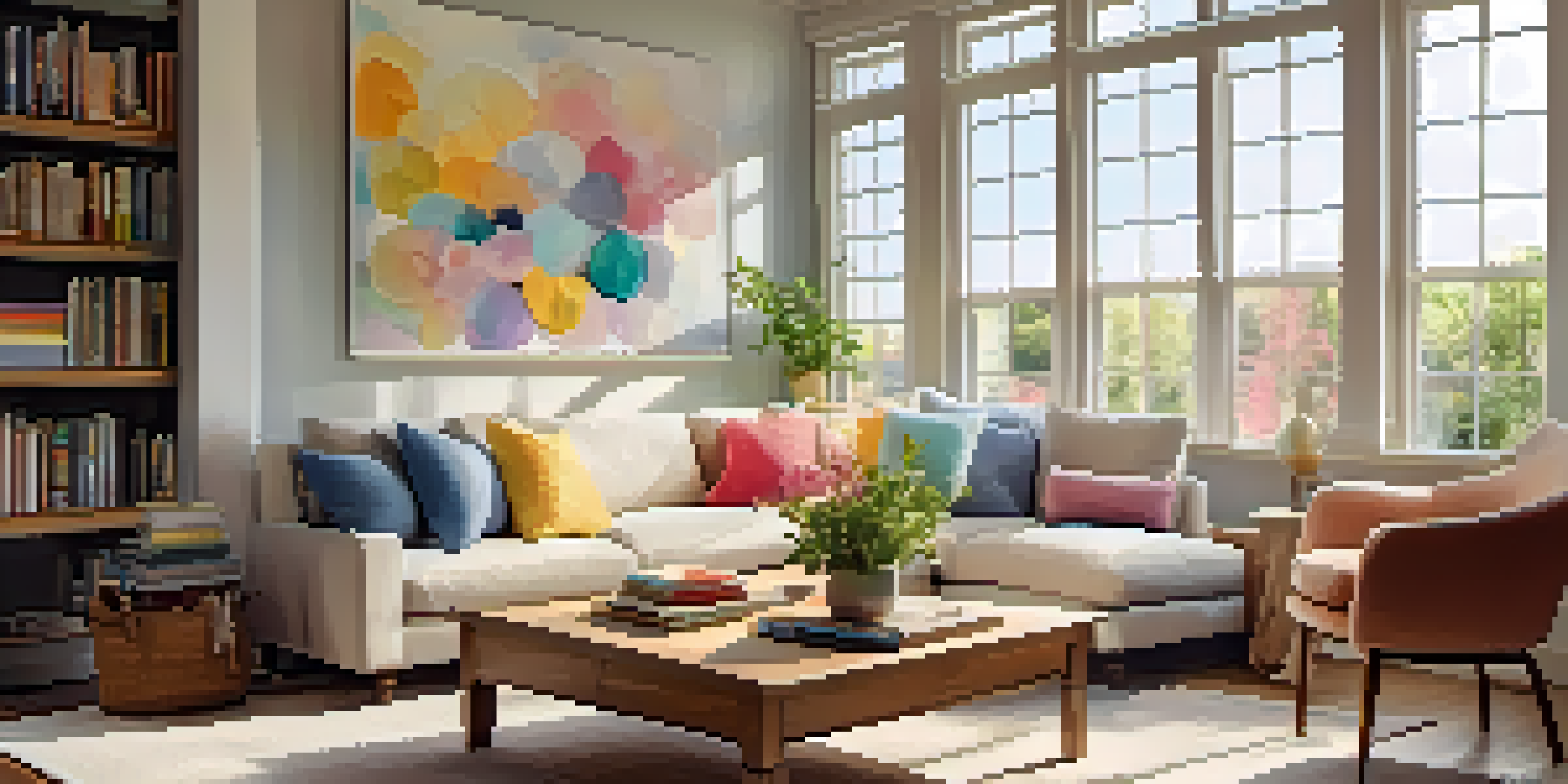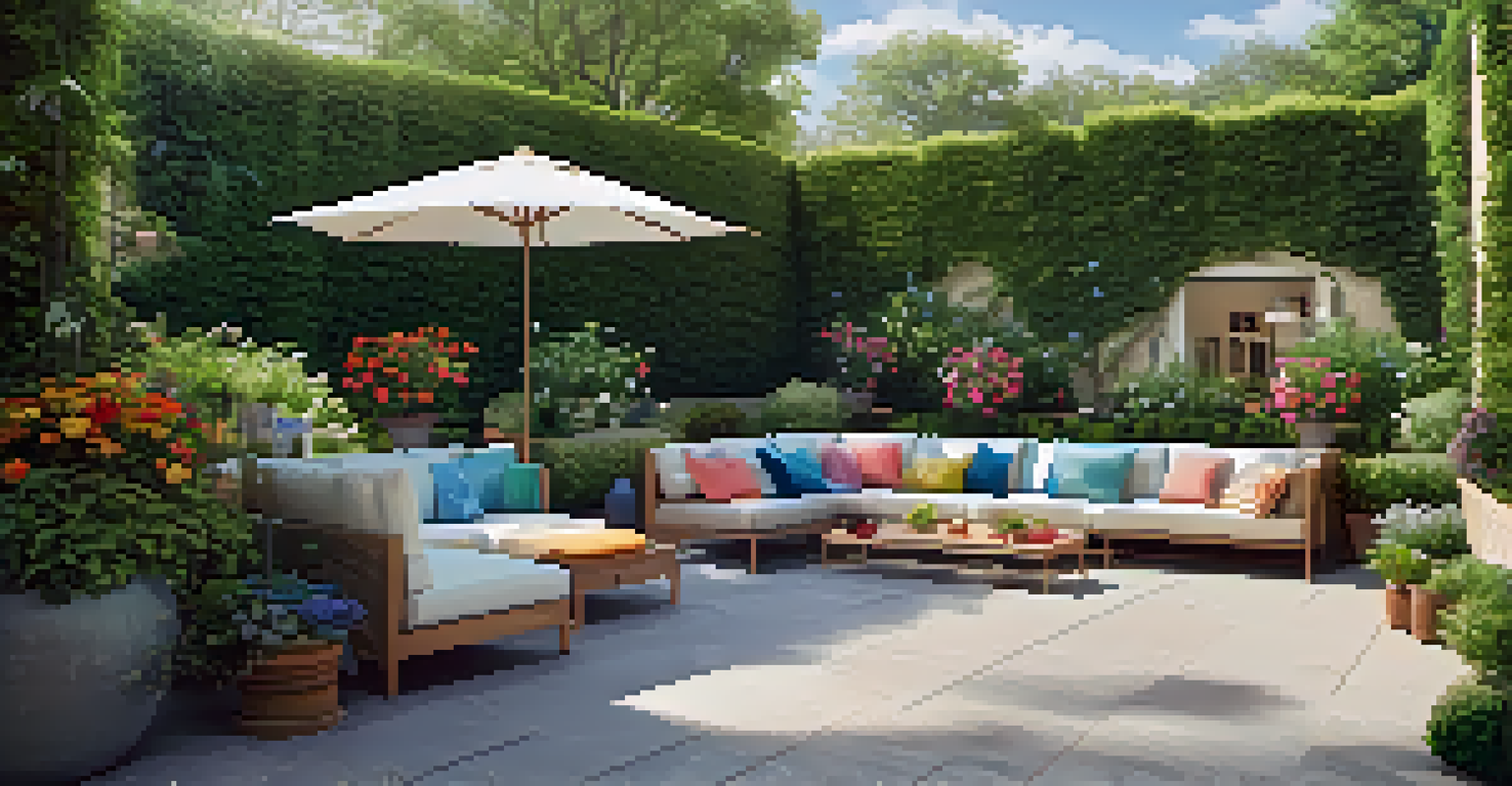How to Declutter Your Home Before an Inspection

Start with a Clear Plan for Decluttering
Before diving into decluttering, take a moment to create a clear plan. Identify which areas of your home need the most attention and set specific goals. This will not only keep you organized, but it will also help you track your progress as you go along.
Out of clutter, find simplicity.
Consider breaking the task down into smaller sections, like focusing on one room or area at a time. This approach makes the process feel less overwhelming. For instance, you might start with the living room, then move on to the kitchen, and so forth.
Having a plan in place also allows you to allocate time effectively. Schedule short, dedicated decluttering sessions throughout your week instead of trying to tackle everything in one day. This way, you’ll maintain momentum without burning out.
Sort Items into Categories: Keep, Donate, Discard
As you begin the decluttering process, it's crucial to sort your belongings into three main categories: keep, donate, and discard. This method not only simplifies decision-making but also helps you visualize what you truly need.

For instance, as you sift through clothes, ask yourself if you've worn an item in the past year. If not, consider donating it to someone who might appreciate it. This mindset can make parting with items feel less daunting.
Plan Your Decluttering Process
Creating a clear decluttering plan helps you stay organized and track your progress effectively.
Remember, the goal is to create a space that feels open and inviting. By focusing on these categories, you'll not only reduce clutter but also make your home more appealing for potential inspectors.
Create a Decluttering Schedule and Stick to It
Establishing a decluttering schedule can greatly enhance your productivity. Dedicate specific days and times for sorting through each room, and treat these appointments as non-negotiable.
The secret of change is to focus all of your energy not on fighting the old, but on building the new.
For example, you might decide to spend an hour every Saturday morning tackling the garage or basement. This regular commitment helps keep the momentum going and makes it easier to see progress over time.
When you follow a schedule, it also helps to minimize distractions. You'll find it easier to stay focused on your decluttering goals, ensuring you make the most of each session.
Utilize Storage Solutions for a Neat Appearance
To give your home an organized look, utilizing storage solutions is key. Invest in bins, baskets, or shelves to keep items grouped together and out of sight. This not only declutters surfaces but also makes your spaces feel more cohesive.
For instance, using labeled bins in a closet can help you easily locate seasonal clothes or accessories. This system not only aids in organization but also makes it simpler for inspectors to see the available space.
Sort Items into Key Categories
Organizing belongings into 'keep,' 'donate,' and 'discard' categories simplifies decision-making and reduces clutter.
Additionally, consider vertical storage options to maximize space, especially in smaller areas. This strategy allows you to keep items accessible while maintaining a clean and open environment.
Declutter Surfaces for a Polished Look
One of the easiest ways to create an impression of cleanliness is by decluttering surfaces. Clear off countertops, tables, and shelves to showcase the space itself rather than the items on it. This simple act can make rooms feel larger and more inviting.
For example, a clean kitchen countertop not only looks appealing but also allows potential buyers to envision their own items in that space. It’s all about helping them imagine how they would use the area.
As you declutter surfaces, invest a few minutes each day to maintain that polished look. A quick nightly tidy-up can go a long way in ensuring your home remains inspection-ready.
Don't Forget About the Outdoors: Curb Appeal Matters
While focusing on indoor spaces, don’t overlook the importance of outdoor areas. Curb appeal can significantly influence first impressions, so take time to declutter your yard, porch, or patio. Remove any items that might make the space look cluttered.
For instance, consider storing away garden tools, children's toys, or any furniture that isn't currently in use. This creates a clean and welcoming entrance for inspectors and potential buyers alike.
Maintain a Clean and Polished Space
Regularly decluttering surfaces and utilizing storage solutions can significantly enhance your home’s appeal.
Additionally, a well-kept garden or lawn can enhance your home’s overall appeal. Simple tasks like mowing the lawn or trimming hedges can make a big difference in how your home is perceived from the outside.
Enlist Help from Family or Friends for a Fresh Perspective
Decluttering can be a daunting task, but enlisting help from family or friends can make the process more enjoyable. Not only does it lighten your workload, but a fresh set of eyes can provide valuable insights on what to keep or let go.
For example, invite a friend over for a decluttering session and make it a fun activity. You can share stories about items, reminisce, and even motivate each other to let go of unnecessary belongings.

Having someone else involved can also provide accountability. With a buddy by your side, you're less likely to procrastinate, and together you can achieve a more organized space in no time.
Final Touches: Cleaning and Organizing for Maximum Appeal
Once you’ve decluttered, it’s time for the final touches. A thorough cleaning will elevate the appeal of your home, making it look well-maintained and cared for. Dust surfaces, vacuum carpets, and mop floors to create a pristine environment.
Consider staging key areas, like the living room or dining space, to highlight their potential. Simple touches like fresh flowers or strategically placed decor can help potential buyers visualize themselves in the space.
Finally, remember to maintain this organized and clean look leading up to the inspection. Regular upkeep will not only impress inspectors but also create a positive atmosphere for anyone who enters your home.